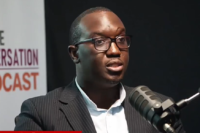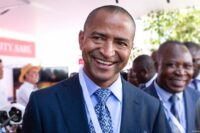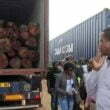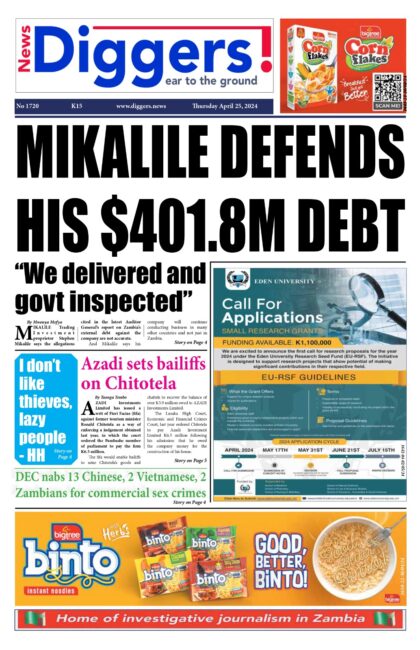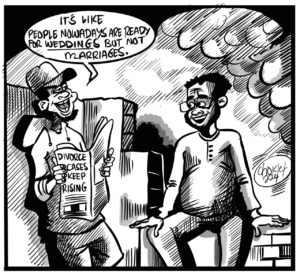University of Zambia (UNZA) senior lecturer in Geography and Environmental Studies Dr Dounty Chibamba says there is too much political interference in urban planning, which has put water security at risk.
Speaking during a public discussion on the decimation of recharge zones in a changing climate, Dr Chibamba observed that Zambia had good policies in place on environmental protection, but that political interference had made it difficult for them to be implemented.
“The policies on paper are excellent, but implementation, that is where we have a problem. We have implementation, but there is too much political interference! For urban planners, there is no need of feeling pity! As a planner, you must be able to be a negotiate; you must have good negotiating skills to convince the inconvincible that let us not do this because it is not good for the country,” Dr Chibamba said.
He cited Forest Reserve 27, which had controversially been de-gazetted to pave way for rapid housing construction.
“Let us mention Forest 27…by the way, in Lusaka, we have two remaining forests: there is also Forest 26. Forest 26 is where the Lusaka South Multi Facility Zone (LSMFEZ) is sitting so it was partially de-gazetted in order for us to build a Multi Facility Zone. After the partially de-gazetted Forest No 26, I think they went in the night and said: ‘wow, what have we done? Okay, instead of finishing it, let us build Lusaka National Park.’ So, behind, they commit a sin and jump over and commit a good,” he said.
“Forest 27 has been partially de-gazetted, meaning we can allow development, which has already started taking place. Now, if we want to be water secure, then we are obliged to protect our recharge zones in Lusaka and see how we can save them.”
He expressed sadness that all politically-affiliated projects were not subjected to Environmental Impact Assessments (EIAs).
“An EIA is law; there are guidelines on the size of the project that will be subjected to an Environmental Impact Assessment. So, yes, you don’t need an EIA to write a Statutory Instrument de-gazetting the forest, but any development that will be proposed for that de-gazetted forest will be subjected to an impact assessment, depending on the size, if it beats the threshold, you do an EIA or you do an environmental policy brief if the project is not very big,” he said.
“So, it is not true that you don’t need EIA, but we know that most developments around the city that have political connections because an EIA is a public document, a report once it is done, it should be uploaded at some server and anybody can be able to access and see to how the assessment was done. But in this country, we have this strange pattern where if the project is controversial and it has some political connotation, you will never see an EIA for that project!”
He noted that setting up of structures on recharge zones was endangering the country’s underground water.
“Not too long ago, we used to do our geography practicals at East Park; there was a bush. We used to go and learn the type of trees that will grow in an environment; there is a waterbow for UNZA there, isn’t it, but we have built over it now. Where Manda Hill stands today, that was another marshland; we have built over it and there is no longer water recharge happening there. Most of ZNBC’s Mass Media area, those used to be recharge zones. Now, nobody will blame urban expansion, urban growth, cities will grow anywhere; cities are restless organs. Lusaka will grow whether you like it or not, but the point is how are we planning for that growth?” Dr Chibamba wondered.
“We have built on most of our recharge zones! Where is the planner when all this is happening? The planner, if you want, you to can equate to the Speaker of the National Assembly in the House. There is order; honorable member for Kachibiya will only speak when the Speaker allows him to do so; if you are out of order, I am sure you have heard ‘order, order?’ If you are out of order, the Speaker will check you. So, here, the urban planner is that speaker; Lusaka city is that chamber where the debates are happening. The Speaker is supposed to control this restless organism, which is expanding, but where’s the planner in all this? So, the point I am making, generally, for Lusaka we have decimated most of the recharge zones.”
He urged researchers to continue talking about the dangers of building structures on recharge zones.
“So, today, we have load-shedding for 10 hours that is similar to what will be called ‘Day Zero’ in terms of water supply, 60 per cent of our water supply comes from ground water resources most of which we have built over. We will present the facts and talk and hopefully the government will listen. We are here to talk and talk so that many people can understand and make decisions from an informed position. We are losing our Goma Lake, the Goma Lake looks low than they have previously been, something, somewhere is not working. East Park is disappearing at our watch, so much as we are pointing the fingers at them, we are also pointing a small finger at ourselves,” said Dr Chibamba .
And another senior lecturer in the same department, Dr Wilma Nchito, said Lusaka was slowly encountering a water supply deficit.
“We are reaching a deficit of 130,000 cubic meters because the daily demand is 400,000 cubic meters and we have Lusaka Water (and Sewerage Company), which is able to supply 270,000 cubic meters so there is a deficit in supply. And if we don’t do anything drastic, this deficit will likely get bigger,” cautioned Dr Nchito.





